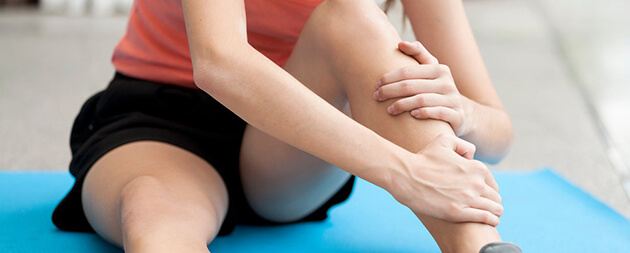SHIN SPLINTS / HEEL PAIN

HEEL PAIN
Heel pain can be caused by many different factors including increased weight or repeated load bearing, wearing insufficient foot wear or hard surfaces, wear and tear of the fat pads of the heel, fallen arches or even excessively high arched feet (pes cavus). Pain can be due to nerve entrapment, (medical calcaneal nerve branches or tarsal tunnel syndrome), stress fractures or plantar fasciitis.
HEEL FAT PAD PAIN SYNDROME
The heel bone (calcaneus) is protected by a cushion of specialised adipose (fat) tissue like a honeycomb effect. The walls of the small components can deteriorate with excessive jumping or shear forces. This can be due to sport or everyday stresses. Once this happens it can be very difficult to treat, so prevention is needed to protect from this. Reduced weight, good customized footwear or shock absorbing insoles, shoes with a rigid heel cup and exercise modification can all help.
PLANTAR FASCIITIS
The long arch of the foot is supported by a fibrous band running from the inside of the heel bone to the ligaments of the toes. As we weight bear and the heel is lifted during ‘take off’ the fascia is stretched. This helps to stabilize the foot under normal circumstances but a tight plantar fascia can be torn or damaged with repeated loading such as running on hard surfaces or rapid stop start activities.
Fallen arches (over pronation), poor footwear and muscle weakness can contribute to this.
Symptoms include:
- Pain on initial weight bearing, easing with continued activity.
- Morning stiffness and a painful limp, reducing after a short warm up.
- Focal tenderness on the inside of the heel bone.
- Associated Achilles tendon tightness is common.
- ‘Bone Spurs’ or inflammation can sometimes show up on x-ray
Treatment includes:
- Modification of training to avoid aggravating factors.
- Non weight bearing activities can be substituted such as. swimming and cycling.
- Use of shock absorbing insides/heel cushions.
- Night splints may be useful.
- Physiotherapy – Shockwave / ice.
- Static stretching.
- Assessment of footwear.
- Injection therapy is sometimes used in chronic cases.
- Acupuncture.
